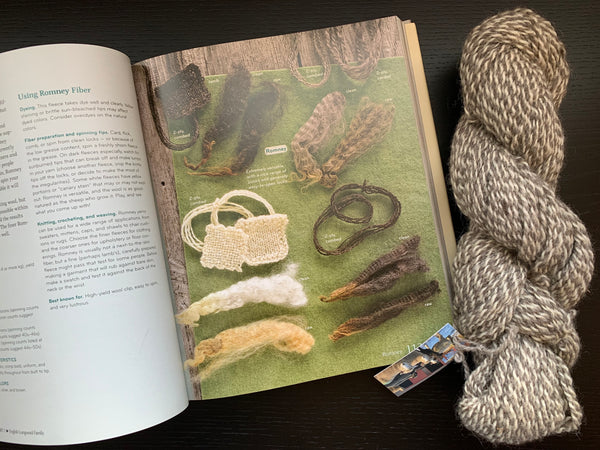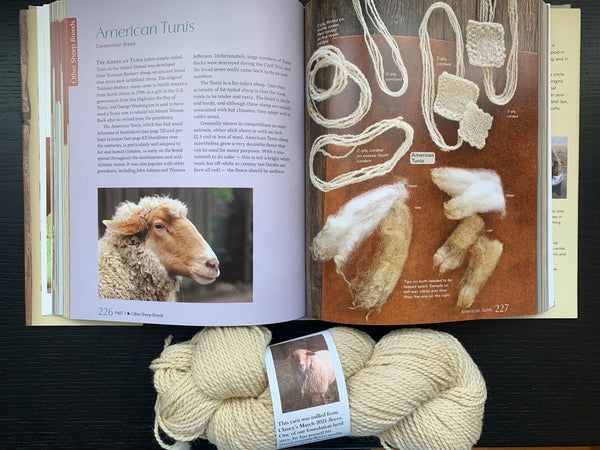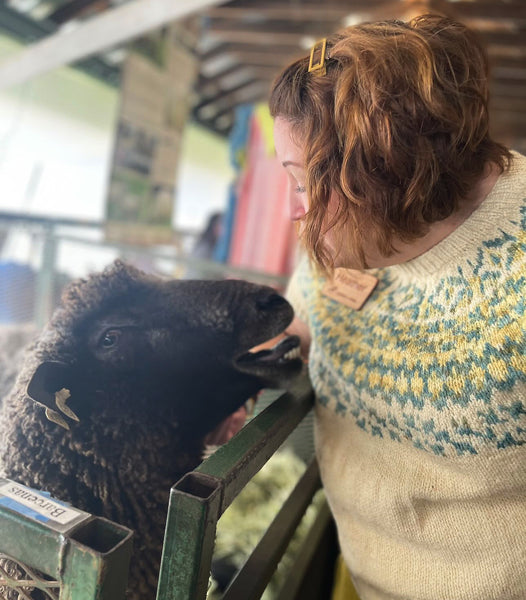Must-Reads from the Fleece and Fiber Sourcebook
I know, I know - it may seem weird to recommend a book for looking up information. I'm the first to grab my phone and search something (my iPhone has about a million tabs open for everything from recipes, to knitting patterns, to dog rescue organizations).
But when it comes to a reference tool for knitters, crocheters and spinners, this book can't be beat! Why? Because it thinks like a yarn lover, in a way that Google search just can't.
You can look up "Romney," get to a 2-page spread with photos of everything about the history of this sheep breed, to what it looks like, to what its raw fleece and knit swatches look like, and recommendations for spinning and knitting with its yarn. I guarantee that would take you a few searches online to dig up. And once you start researching rarer sheep breeds, you'd be piecing together multiple sites for a while.
This book does that work for you.
A 2-page spread on what to expect from Romney fibers, below:

When we knit and crochet with blended fibers - which most commercial yarns and mill yarns are - they combine a number of sheep breeds' fibers together and you sort of learn what to expect based on that brand.
But when you start to explore the world of single-breed fiber - what to expect if you are knitting with 100% Shetland, or Cotswold etc - it's really helpful to understand how these sheep differ, because their fleeces produce different textures that may surprise you, in the best possible way. And that may get your creative juices flowing in some fun directions when you think about what to make with their yarn!
Think of this book as a map on that journey - giving you some signs and pit stops on the way, so you can plan your trip with an idea of what to expect.
And that is my #1 use for this book.
For example ... I recently got some fabulous Tunis from Tarheelbilly Farm. It's my first time knitting with 100% Tunis, and I planned on making a shawl with it, which will be no problem at all with this gorgeous stuff. But of course, I had to go peek into The Fleece & Fiber Sourcebook to learn more about this cinnamon-y colored sheep before I start.
After reading up on Tunis, I had a better idea of what to expect from my yarn (en route to me via the mail) and started shifting my pattern ideas. When the yarn arrived - even squishier than I hoped! - I made a sweater instead, and it was the right call. The Fleece & Fiber Sourcebook pointed me in that direction, and it's a favorite make of mine to this day!
My yarn next to the Tunis page:



